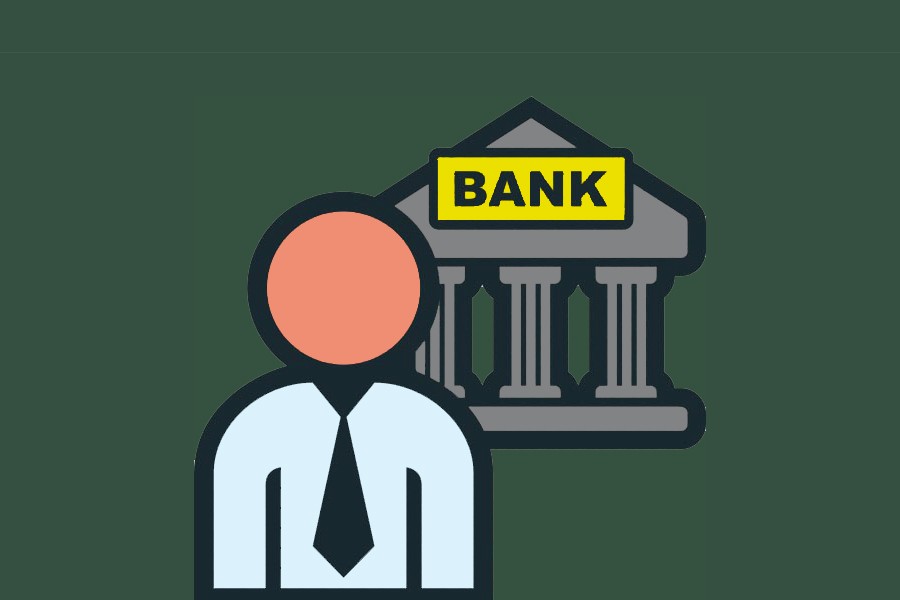The banking sector in Bangladesh - the lifeline of the economy - got a jolt in recent months. The root relates to the scams in Sonali and BASIC banks. The sector is apparently passing through a phase of swings in financial indicators.
The banking sector was saddled with an excess liquidity of more than Tk1000 billion about a year ago. But there was not enough number of clients at that time to absorb those funds. There could be two reasons behind this: sluggish private investments that decreased demand and uncertainty in the market created by the scams, where economic agents took a position of 'watch and work'.
However, one year down the road, just the opposite has happened. The banks are now reported to be facing chronic liquidity crisis. In other words, demand for loanable funds far exceeds the supply of loanable funds, thereby pushing up the interest rate and pushing down investment as the price of capital increased. In consort with the rush for aggressive lending, the advance-deposit ratio shot up creating further panic in the market. The impacts of these shifts of demand and supply on interest rate are quite understandable.
The sudden swings in demand and supply in this vital sector warrant an explanation. Experts are of the view that our banking system has been passing through a 'strange and critical' phase because of a series of bad loans approved by some unscrupulous managers at the top. Historically, state-owned banks were blamed for messing up things, but of late some private banks also doing the same. Newspaper reports as well as Bangladesh Bank investigations point out how name-only organizations siphoned off huge sums in fake loans from both the state-owned and private banks. According to the central bank data, a wide gap prevailed between advances and deposits, especially between January and December last year. At that time the depositors were reluctant to keep money in banks in place of investing in National Savings Certificates carrying an interest rate as high as 11-12 per cent against that of the banks' rate at 6-7 per cent. Now banks are seeking to beef up their deposit by hiking interest rate - as much as 9.0 per cent - to attract depositors! The impact of a rise in the cost of capital on industrial and business growth in a fragile investment environment, perhaps needs no elaboration.
Earlier, a large number of banks had gone on an aggressive lending spree to maximize profits without looking at the pros and cons of financial calculus. This is reflected by the fact that private sector credit growth ran at about 20 per cent, which was much above the targeted 16 per cent or so stipulated in the Monetary Policy Statement. It needs little mention that the erstwhile low-lending rates made bank-money particularly attractive for luring investors. But as time passed, the demand exceeded supply, and the interest rate shot up to peak at 10 to 13 per cent.
Aggressive drive for clients has a cost. First, it foregoes due economic diligence required before sanctioning loans to clients. Second, it also 'empowers' the directors of banks, who try to sanction loans based on whims - not in line with the views of technical experts. Ipso facto, the logical consequence was that quite a number of bank borrowers turned out to be bad borrowers defaulting on or delaying repayment. Obviously, this has serious costs for the banks' cash flow management. Failing to fetch loaned-out money along with the dwindling deposits gave rise to a deposit-crisis. It is estimated that the share of defaulted loan would be 10-15 per cent.
As per rules, a bank has to maintain a certain advance-deposit ratio (ADR). Before the crisis period, the ADR was 85 per cent for conventional banks. In the move to maximise profits through aggressive lending, the banks crossed the boundary for lending without increasing deposit at the same time. That has supposedly constrained future lending capacity of the banks. To add salt to the injury, defaulted loans fell on the shaky shoulders. Any loan not paid in due time was added to the banks' asset column, thereby making their ADR even worse. Meanwhile, the central bank has taken a realistic view of the situation and ordered the private commercial banks to reduce their ADR: 83.5 per cent for conventional and 89 per cent for Islamic banks. with a view to controlling the aggressive lending.
Meanwhile, amid the struggles of private banks with liquidity crisis, some of the government organizations started withdrawing funds from the private ones for depositing in public banks.
However, at the root of the crisis is the gap between the rate of credit expansion and the rate of deposit mobilisation that has widened by as much as seven percentage points - as the credit flow marked 19 per cent against the deposit flow of 12 per cent at the end of December 2017. Finally, as an eminent economist has rightly pointed out: "Import has recently increased. Capital machinery import has increased by about 37 per cent. Sugar, rice, wheat and cotton imports have also shot up quite significantly. This has put pressure on US dollar and dollar has, consequently, become pricier. This means importers now need more cash to buy dollar for the same amount of commodity. This, in turn, has put a pressure on the banks' liquidity".
To come out of the crisis, banks should return to the basics -"curb 'aggressive lending', focus on the recovery of classified loans, and increase their capital base by collecting more deposits". And the government should see to it that financial institutions like banks are above political influences, culprits are brought to book, and recapitalisation is stopped as a disincentive for bad performance.
Abdul Bayes is a Professor of Economics at Jahangirnagar University.


